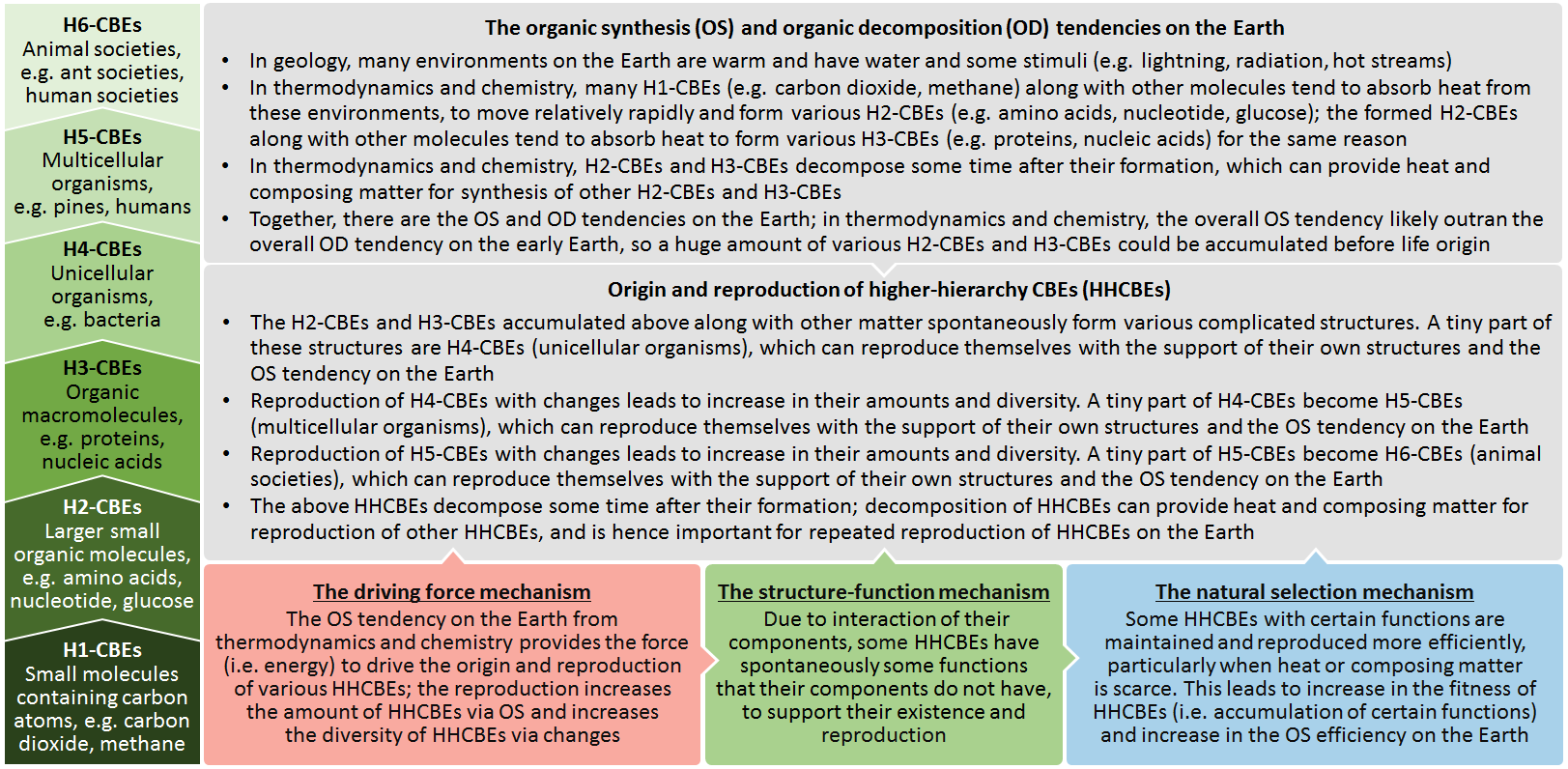Evolution is fundamental to natural sciences and social sciences. Existing evolutionary theories are incomplete and unable to explain multiple evolutionary issues. To establish a comprehensive and comprehensible evolutionary theory, we employ the concept carbon-based entities (CBEs), which include methane, glucose, proteins, organisms, and other entities chemically containing carbon atoms. We deduce the steps, driving forces, and mechanisms of evolution of CBEs, through integration of geology, physics (particularly the second law of thermodynamics), chemistry (particularly chemical reactions of CBEs), and biology (particularly the essence of reproduction, genomes, and natural selection). We hence establish the Carbon-Based Evolutionary Theory (CBET), which suggests that evolution is the increase in the amount, diversity, and fitness of higher-hierarchy CBEs under natural selection and driven by the organic synthesis tendency on the Earth from the thermodynamic features of the Earth. It provides better explanations for various evolutionary issues (e.g. life origin, neutral mutation, speciation, and evolutionary tempos) than existing evolutionary theories. It reveals the physiochemical roots of biological evolution and the evolutionary roots of multiple social notions important to harmonious development of human society. It refutes from a novel respect some incorrect thermodynamic notions regarding evolution (e.g. negative entropy). It hence removes contradictions between physiochemistry, biology, and social sciences, and bridges them through evolution. The CBET is reliable as per its deduction and applications. Therefore, the CBET is more scientific and comprehensive than existing evolutionary theories, and could have great significance in natural sciences and social sciences. Meanwhile, the CBET is open to optimization and extension.

